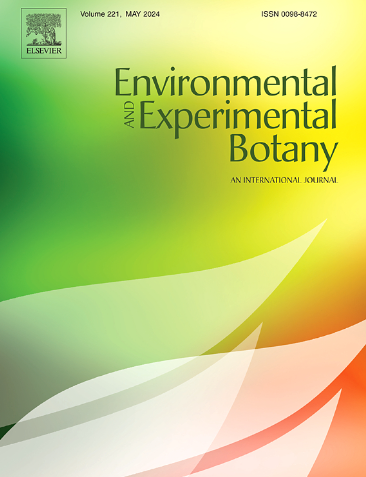Metabolic network plasticity underpins Eucalyptus water use efficiency under drought
IF 4.7
2区 生物学
Q2 ENVIRONMENTAL SCIENCES
引用次数: 0
Abstract
Several Eucalyptus species are grown worldwide primarily for fiber production, while also playing a crucial role in forest ecosystem health within their natural environment. Although various chemical and physiological traits have been identified as contributors to water-deficit (WD) acclimation, the role of metabolism-mediated mechanisms in Eucalyptus WD responses remains unclear. Here, we performed a comprehensive characterization integrating metabolomic and physiological analyses of 14 Eucalyptus species subjected to well-watered (WW) and WD conditions. Our results showed that different Eucalyptus species employ different strategies to enhance water use efficiency (WUE) in response to WD. A total of 53 metabolites were significantly altered by WD in at least one species. Principal component analyses indicate that E. cloeziana and E. stenostona were the most metabolically responsive species to WD. Notably, these species exhibited highest increases in WUE following WD imposition, which was also closely associated to constating network properties - higher network density in E. cloeziana and network heterogeneity in E. stenostona - but specially with the highest number of hub-like nodes. Overall, WUE was positively correlated with both network density and the number of hub-like nodes in in metabolic networks under WD. Moreover, WD triggered the emergence of new hubs associated with the tricarboxylic acid (TCA) cycle and the related pathways. Our findings highlight that the Eucalyptus metabolic responses to WD are species-specific, but metabolic network plasticity - defined as the ability to modify network topology and density - plays a key role in regulating WUE under WD.
代谢网络的可塑性是干旱条件下桉树水分利用效率的基础
几种桉树在世界范围内主要用于纤维生产,同时在其自然环境中对森林生态系统健康也起着至关重要的作用。尽管各种化学和生理性状已被确定为对水分亏缺(WD)适应的贡献,但代谢介导的机制在桉树WD反应中的作用仍不清楚。在此,我们对14种桉树在水分充足(WW)和WD条件下的代谢组学和生理学进行了综合分析。结果表明,不同桉树树种对水分利用效率的响应策略不同。在至少一个物种中,共有53种代谢物被WD显著改变。主成分分析表明,cloeziana和E. stenostona是对WD代谢最敏感的物种。值得注意的是,这些物种在WD施加后WUE的增加幅度最大,这也与恒定的网络特性密切相关——cloeziana的网络密度更高,而E. stenostona的网络异质性更高——但特别是与最高的hub-like nodes数量有关。总体而言,WUE与WD下代谢网络的网络密度和hub-like nodes数量呈正相关。此外,WD触发了与三羧酸(TCA)循环和相关途径相关的新枢纽的出现。我们的研究结果强调,桉树对WD的代谢反应具有物种特异性,但代谢网络可塑性(定义为改变网络拓扑和密度的能力)在WD条件下调节WUE中起关键作用。
本文章由计算机程序翻译,如有差异,请以英文原文为准。
求助全文
约1分钟内获得全文
求助全文
来源期刊

Environmental and Experimental Botany
环境科学-环境科学
CiteScore
9.30
自引率
5.30%
发文量
342
审稿时长
26 days
期刊介绍:
Environmental and Experimental Botany (EEB) publishes research papers on the physical, chemical, biological, molecular mechanisms and processes involved in the responses of plants to their environment.
In addition to research papers, the journal includes review articles. Submission is in agreement with the Editors-in-Chief.
The Journal also publishes special issues which are built by invited guest editors and are related to the main themes of EEB.
The areas covered by the Journal include:
(1) Responses of plants to heavy metals and pollutants
(2) Plant/water interactions (salinity, drought, flooding)
(3) Responses of plants to radiations ranging from UV-B to infrared
(4) Plant/atmosphere relations (ozone, CO2 , temperature)
(5) Global change impacts on plant ecophysiology
(6) Biotic interactions involving environmental factors.
 求助内容:
求助内容: 应助结果提醒方式:
应助结果提醒方式:


